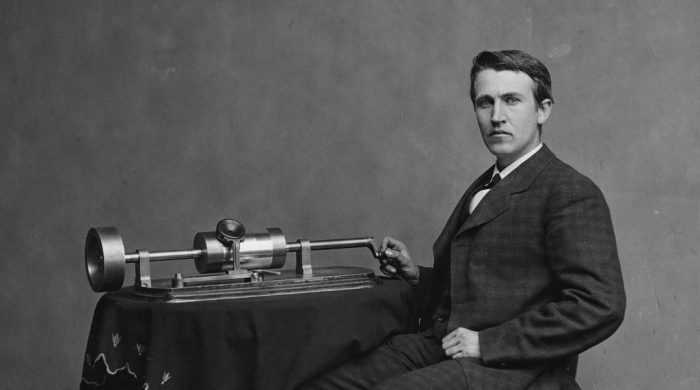The ‘Gramophone’ was invented by “Thomas Alva Edison” in the year 1877. At that time it was known as ‘Phonograph’.

It was the hand-cranked device which can record and playback sound on a rotating wax cylinder. The first Phonograph has the limited acoustic value. The quality of sound was not good, it sounds like screechy and awkward as the listener has to rotate the cylinder with hand continuously in an inconsistent speed. So, after making some improvements in the device, he re-introduced the device very next year in 1878 at the price of $10 for home common use.
In the second version also the volume was quite medium and it records and plays the sound of about 2 to 4 minutes. Later, in 1896, he founded National Phonograph Company and sold the improved version of Phonograph ‘Edison Home Phonograph’ by $40 and another model ‘Standard’ by $20.
The other inventors also tried their hand in making the better version of Gramophone but they all succeeded in making the device which could only record the sound. Whereas, Edison’s Gramophone was one of the types which could reproduce the recorded sound. Initially, the first recorded the sound into a tinfoil sheet wrapped around the rotating cylinder. After that, the Volta Laboratory of Alexander Graham Bell made the various improvements in the device and reintroduced the device with the name of Gramophone.
In the 1890s, another Inventor Emile Berliner introduced the standard record player which looks in the shape of a flat circle. After that, Cassette Tapes and Compact Disk and other musical recording formats came into the market. The first type of gramophone had an internal sound amplifier, which made with various materials, different versions and shapes. It was not very handy, heavy on space and sometimes becomes very hard to operate. So, later the gramophones with internal or hidden amplifiers were launched.